James Edward (Jim) Robb
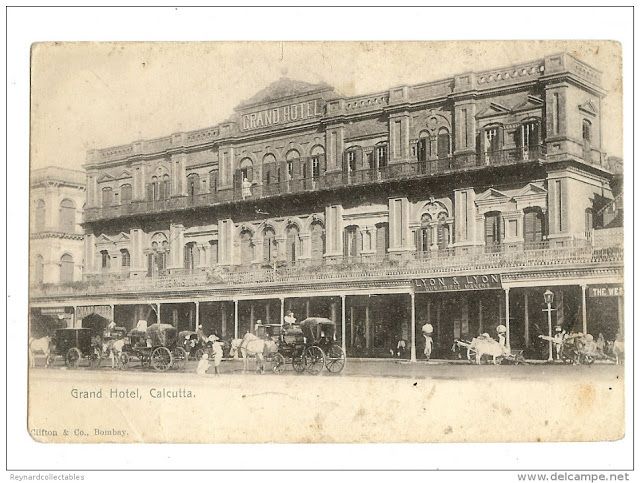
© Janet Lane walers.blogspot.com Image: The Grand Hotel in Calcutta (now the Oberoi) had a “Waler Corner” where Australian horse traders met; often after the horses were sold at the Army Remount Depot at Alipore. Some traders such as Jim Robb stayed here.
Jim Robb lived in South Australia. He’d migrated from Scotland with his parents, arriving on his first birthday. He started young in the horse trade – working for Gidney and Derham and accompanying horses to India at age 16 – they’d noticed his uncanny ability to train horses and employed him on the condition he finish his education at the same time. His daughter Maise Chettle (nee Robb) wrote a book about him “Jim Robb”, published by Seaview Press in 1996 – lots of photos and a great look at the trade and breeding. He bred horses for India as well as buying them, having the station Lambinna (also written Lambina).
Thank you New Zealand, for Carbine. This stallion became worshipped like a god in Australia, where he was sold as a youngster and had his racing and early stud career. “Old Jack” as he was known, was sent to England in his old age for further stud duties. Carbine, 16.1hh, was by Musket out of Mersey. It would be hard to find a Waler or Thoroughbred without Carbine blood. Some Waler breeding stations had many of his offspring, for example his son Pistol, out of Wenonah, foaled in England but was sent to Australia and stood in South Australia.
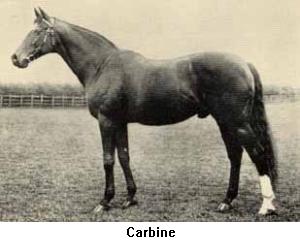
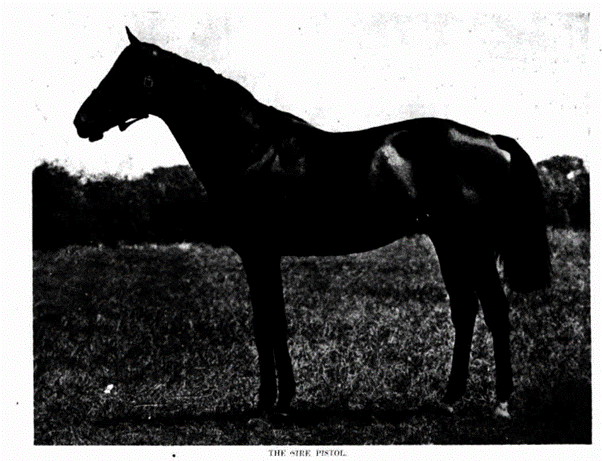
Carbine’s blood is in the Garden station Walers we accessed. Some birdcatcher type marks (flecks etc) on the Gardens horses and tail colouring at the top of the tail are called ‘Pistol Marks’ from this influence, known as such in Robb’s day. Jim Robb sent over 20 Pistol colts and stallions to Lambinna.
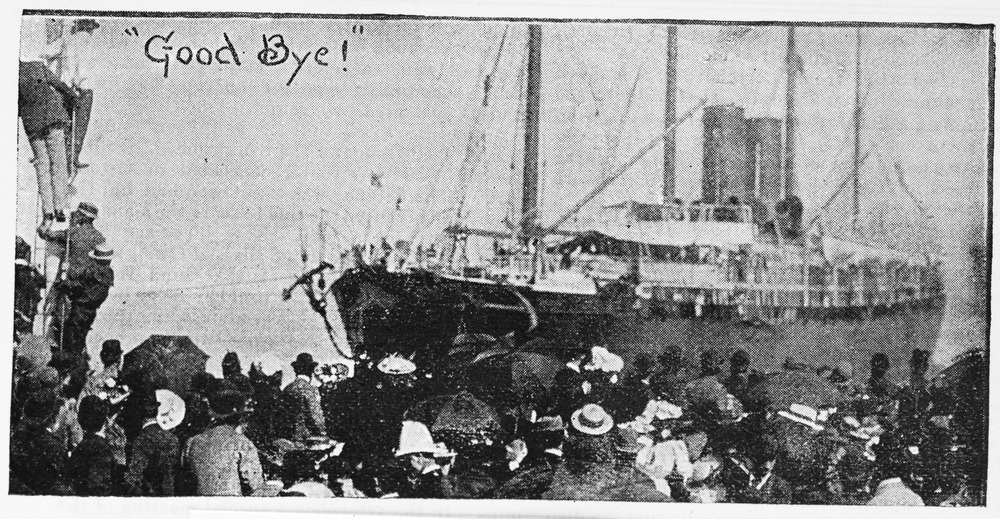
A sobbing crowd of thousands farewelled the horse when he left Australia. Heart-wrung poems filled the newspapers. When he died in England, Carbine’s body was sent back to Australia. His skeleton was mounted in the Melbourne Museum, and like the (later) stuffed body of Phar Lap, became an object of pilgrimage and reverent worship.
Robb constantly bought good TB stallions and occasional draught stallions. He bred thousands of horses and culled heavily for type and temperment, shooting some at each muster and many more hundreds yearly after 1938 and the trade to India pretty well cut out. On a tour around Central Austalia in 1930 with C.A. Martin he was critical of many horses showed to him for sale (they were buying for India) and although they got 200 horses it was with a lot of travelling. Robb shot hundreds that looked “inbred and wretched.”
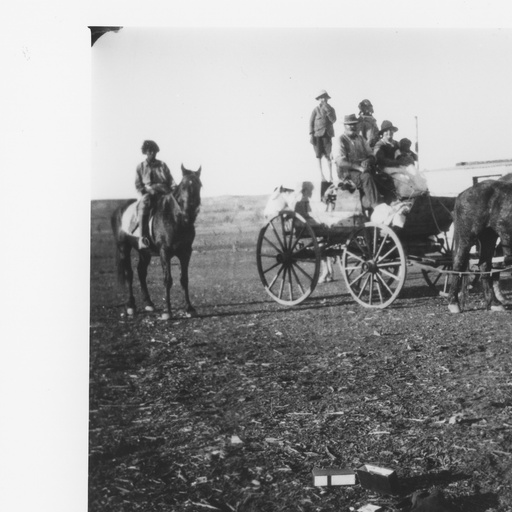
One of the stations that was part of Lambinna is Granite Downs which now forms part of the vast Indulkana (now Iwantja) Aboriginal lands. Lambinna is approximately 70 kilometres north-east of Marla and 150 kilometres north-west of Oodnadatta now sharing a boundary with Granite Downs to the west and Todmorden Station to the east.
Image: Granite Downs buggy. The boy on the left is Paddy Waye. C. 1927.
State Library S.A.
Robb ran Thoroughbreds but also put draught through to get his types, his ideal horse early on having a ‘draught grandmother’. His types soon bred true – heavy artillery, lighter artillery, remounts. Robb usually spent 6 months on his stations then the rest of the year in Adelaide where he had land for horses at Prospect, training horses ready for Ceylon and India. His son Walter became a good horseman too, sadly both he and Jim caught typhoid on one trip to India and Walter died there. It was his fourth trip to Calcutta and he was only 24. His mother and sister rushed over but arrived too late. His brother Alec with them, also a good horseman, escaped infection.
Robb also supplied South Australia’s police horses. In 1937 he said all credit for their good reputation was due to Inspector Johns of the police, who made sure the semi-wild horses they got from Robb were carefully trained by the police.
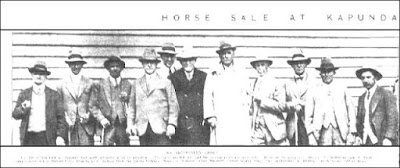
The Horse Sale held at Kapunda last week attracted a lot of attention. The sales totaled 456, and the average price was over £15. Those in the group are Messrs. R. McKenna and J. Robb (buyers for India), Harold Coles, Charles Coles, Sydney Reid, Sir Sidney Kidman, Messrs. C. Kidman, Steve Margrett (Indian buyer), Ross Coles (auctioneer), G. Medlow, and A. Raws (Indian buyer). The Chronicle, October 1939.
In WW1 Robb enlisted and served from 1914 to 1918, became a Sergeant in the Army Veterinary section of the Light Horse but due to medical conditions (foot squished by a horse) did not leave Australia.
Robb had 41 trips to India, the last in 1938 when his son died there, although he continued selling horses there – racehorses, remounts, field gun horses, polo ponies, private matched carriage horses, paperchasers (one to the Prince of Wales who came a cropper off it, Robb was riding behind him, in India, and said it wasn’t the horses fault!), private riding horses.
After WW2 he was still selling horses – to the Emperor of Abyssinia, India through Calcutta, and Greece, Turkey, Malaya and France. As the horse trade was decreasing, he went over more to sheep and cattle, in 1941 shooting 638 mares and fillies on Lambinna “to save precious water.” Among his stallions then was Reno, a TB imported from Ireland. The stallions were not shot. One of South Australia’s greats, and a natural horseman.
Below are two pages of a letter from Jim Robb’s daughter Maise Chettle to Debi Robinson, kindly shared from her personal collection by Debi.
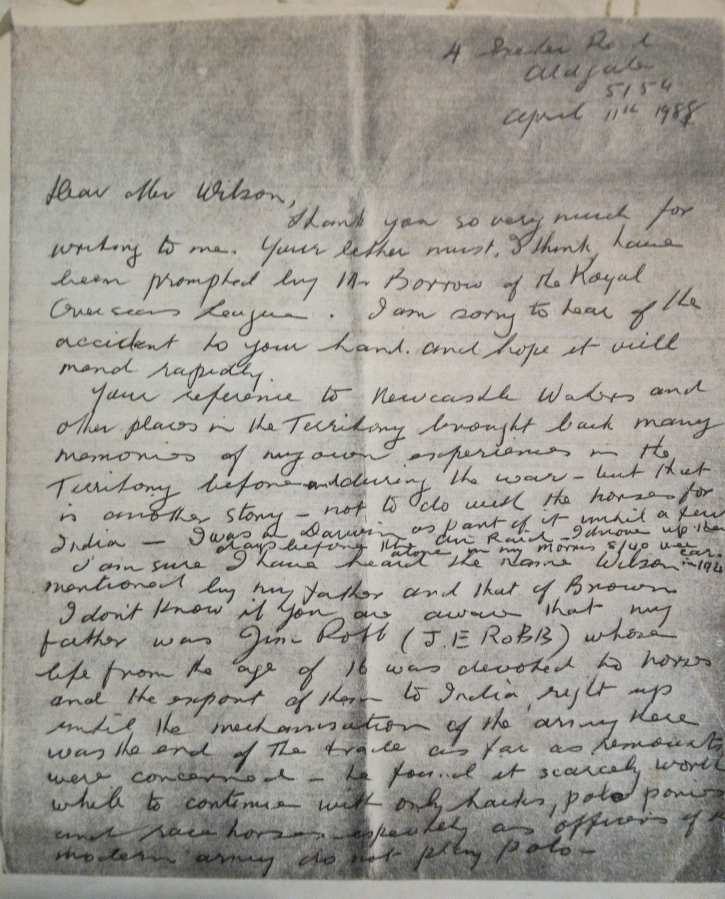
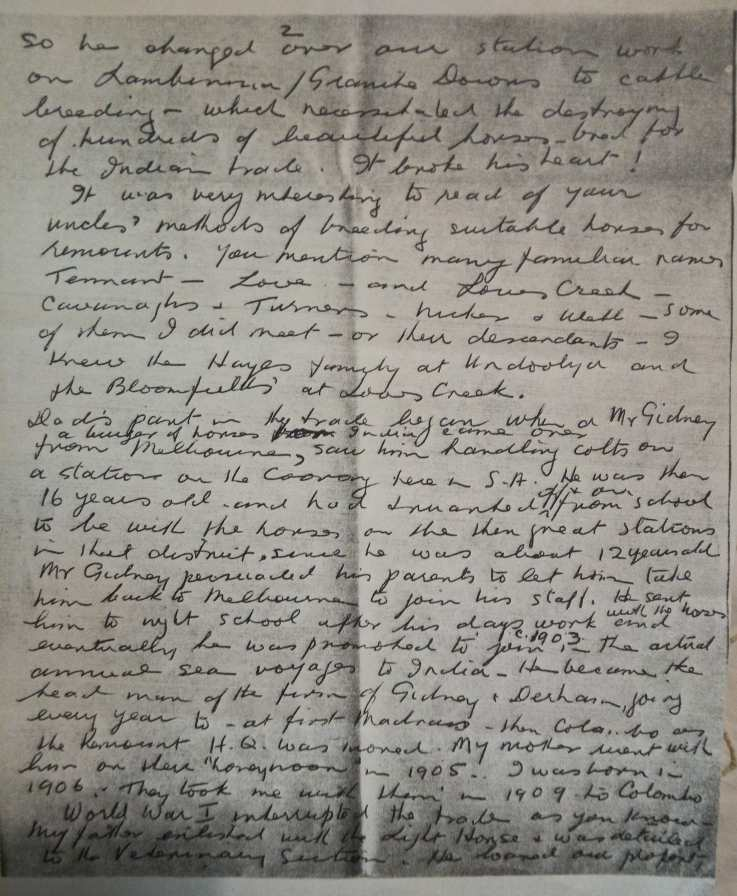
Read more information about the general area around Lambinna here.